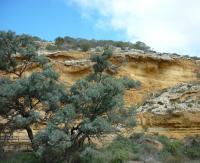Dr. Amy Roberts, a lecturer from the Flinders University Archaeology Department (South Australia) has recently joined the IPinCH project as a Scholar Associate. Amy is a multi-disciplinary researcher with training and experience in the disciplines of archaeology and anthropology.
In 2003 Amy was awarded her doctorate through Flinders University, South Australia. Her Ph.D. research involved a broad-ranging, interdisciplinary investigation of the points of agreement and conflict between Indigenous peoples and the archaeological discipline. Since 2003 Amy has completed a Graduate Certificate in Applied Anthropology through the University of Western Australia.
From 2002-2009 Amy was employed in various archaeological/anthropological roles at the Aboriginal Legal Rights Movement and South Australian Native Title Services including: Research Officer, Senior Professional Officer and Acting Manager of Research. In recent years her primary role has been as an ‘expert’ for a number of native title claims.
One of her current research programs, the Ngaut Ngaut Interpretive Project, involves working in collaboration with the Mannum Aboriginal Community Association Inc. to produce interpretive materials for the iconic Australian archaeological site known as Devon Downs in disciplinary literature – although the Aboriginal community call this rockshelter Ngaut Ngaut and this place name has rightly taken precedence in all of the project materials. Ngaut Ngaut is iconic because it was the first Australian site to be scientifically excavated (by Norman Tindale and Herbert Hale in 1929) and as such the research provided the first clear evidence for the presence of Indigenous Australians in one place and over a long period of time.
The site, located on the Murray River in South Australia, features a range of tangible and intangible values that have required interpretation including: archaeological history, excavations, rock art, Dreaming, oral history, discussions about Aboriginal group boundaries and ‘totemic’ issues just to name a few! One of the challenges of the project has involved finding ways to properly include and interpret all of these important values in a way that is culturally appropriate and which at the same time provides engaging and educational information to the public.
Lyn Leader-Elliott, an IPINCH research team member, is also contributing to the program through the provision of tourism advice and Flinders University Archaeology Department students are joining the project to provide additional assistance.
The accompanying photo of the Ngaut Ngaut site on August 23, 2010, was taken by Amy Roberts.






